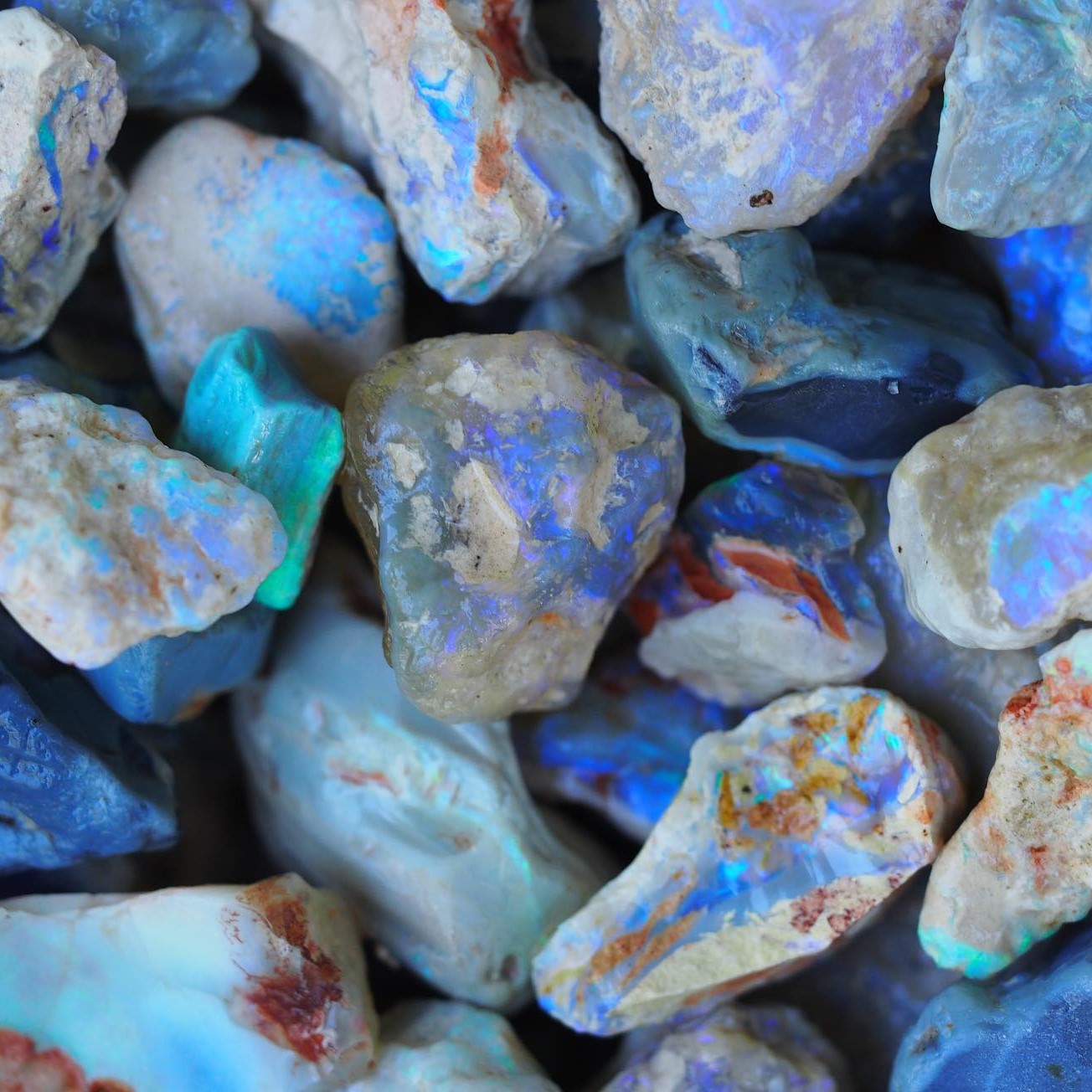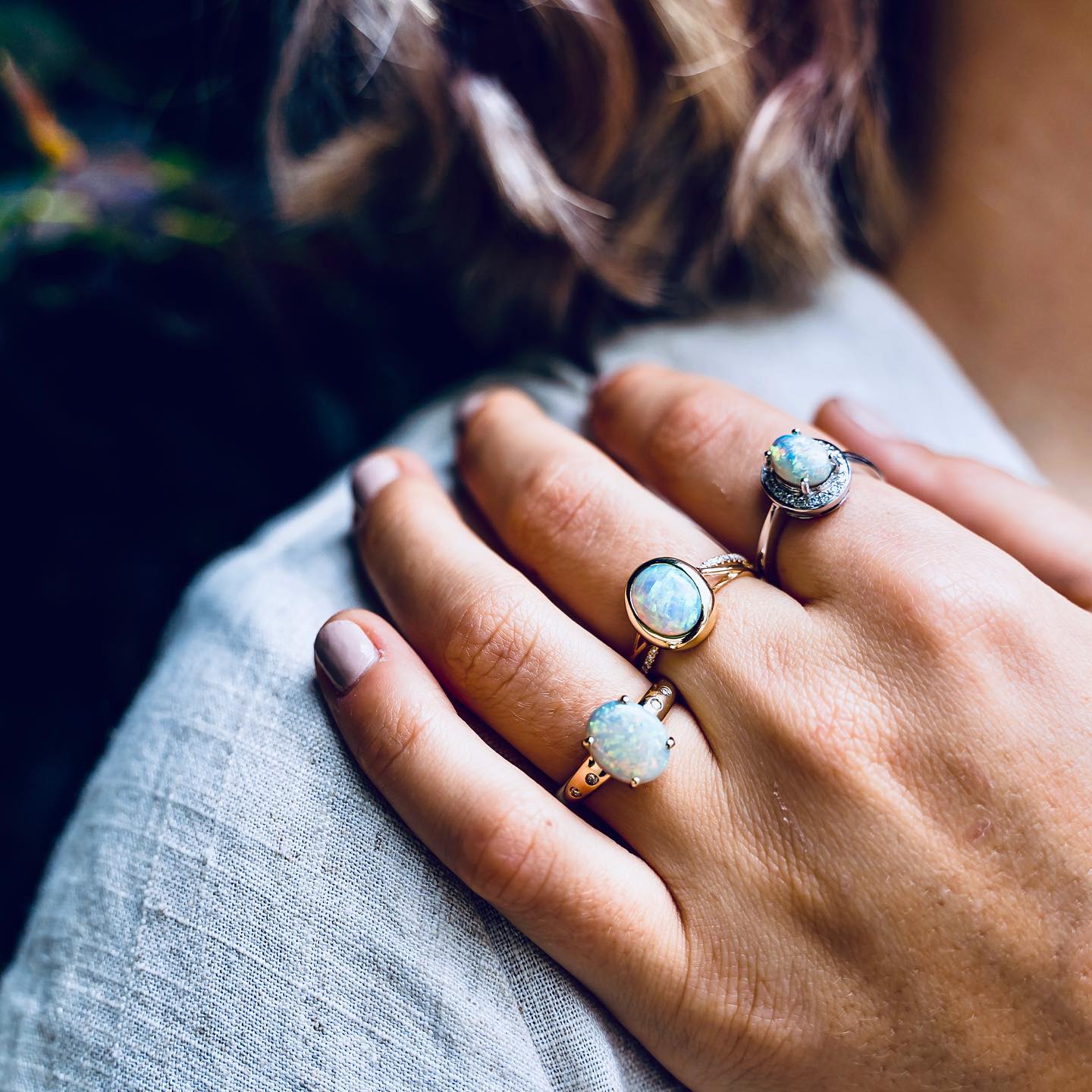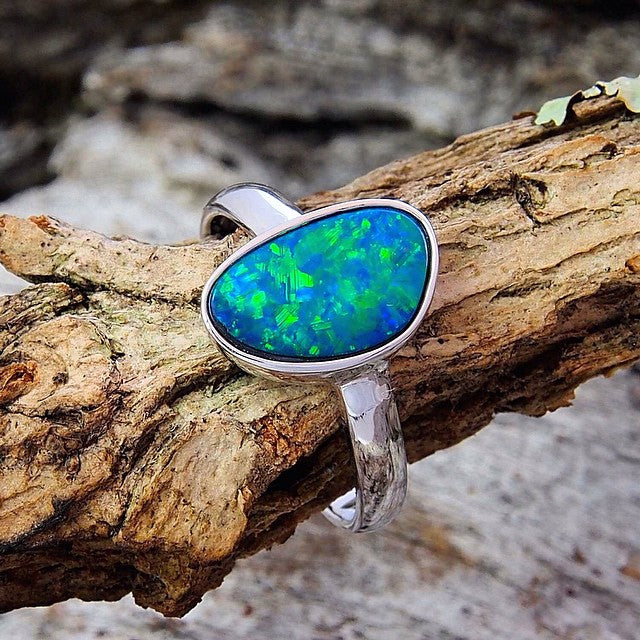
The Bad Luck Myth About Opal
Opals are a beautiful, unique and mystical product of Mother Nature, embraced throughout history as the Queen of Gems. But is there any truth to the superstition that opal brings bad luck?
Personally, we’ve never seen any evidence to support this belief so, getting straight to the point, the answer is a simple ‘No’.
Unfortunately, over the past two centuries opal superstitions have arisen from one source or another, giving this precious Australian gemstone a bad reputation. Today, some in the western world still wrongly believe the gemstones to be cursed.
The most common opal superstitions
The most often heard opal superstitions include:
- Only those born in October whose birthstone is an opal are safe to wear them
- Opals should never be given or accepted as a gift
- If opals are gifted, bad luck can be negated by handing its giver a small sum of money to turn it into a financial transaction, and thus break the curse
- Engagement rings must never contain an opal, else the new bride will quickly become a widow
- White or milky opals are regarded as jinxed, but black opals are thought extremely lucky
- Setting opals with diamonds negates the stone's ability to draw sorrow to the wearer as diamonds are said to have power over the opals.
- Opals turn pale in the presence of poison, and lose their shine once their owners die
So why did opal come to be known as the 'stone of tears', and is it true? We’ve delved deep into the myth and discovered a fascinating story of luck and lore that starts in ancient times.

Opal's 'good luck' history
For thousands of years, many of the world’s greatest cultures have believed in the power of gemstones and minerals, creating legends and myths around their magical properties.
Aquamarine was said to be the treasure of mermaids, with the power to keep sailors safe; diamonds were believed to be the tears of gods and worn by the Romans to bring strength and bravery during battle; and the Greeks adorned themselves with pearls on their wedding day to ensure a harmonious marriage.
Opal also held its own favourable legend in ancient times; in fact, it was regarded as the luckiest and most magical of all the gems!
Caesars in ancient Rome gifted opals to their wives as a token of good fortune, hope and purity. The early Greeks thought opals bestowed powers of foresight and prophecy upon their owners. Even the Egyptians loved opals for their positive and powerful attributes.
The Arabs of Mohammed’s time were also captivated by the beauty and mysticism of opal, creating a legend that they were carried to earth on bolts of lightning.
In the Middle Ages, opals were considered a good luck talisman as they contained all the virtues of each gemstone combined, including their colour spectrum.
Queen Victoria was also a lover of opal, wearing opals throughout her 19th Century reign and owned a fine personal collection.
Today, opal is the birthstone for those born in October, loved by people who believe in the power of gemstones and crystals for their healing properties, and are especially favoured by Asian cultures including the Chinese and Japanese who believe opals are lucky for business.
Even Hollywood’s leading ladies have embraced Australian opals for their beauty, sophistication and their symbolism – Australian actress Cate Blanchett (pictured below) received her 2014 Academy Award for Best Actress wearing spectacular Chopard opal earrings (below). Now that’s some good luck right there!
 Where opal superstitions began
Where opal superstitions began
So where did opal's bad luck story originate and why?
Although fantastical stories of witches and sorcerers strengthening their magical powers with black opals exist, and Medieval Europeans believed opal to resemble the 'Evil Eye', the most popular source of the story that opal is bad luck began with the great 19th century author Sir Walter Scott.
In 1829, Scott wrote a novel called Anne of Geierstein in which a character named the Baroness of Arnheim wears an opal talisman with supernatural powers. According to the story, the Baroness dies when a drop of holy water falls onto the opal and drains the stone of its colour.
Lucky for Scott, his book was very popular; unfortunately for opal, people at that time began to associate opals with bad luck and death, and amazingly sales of the gemstone dropped by 50% and remained low for 20 years after.
In the 19th Century, opal's reputation also took a hit as the cause of falling monarchies, famine, pestilence, and the Black Plague - Europeans started believing a bright and colourful opal worn by a patient lost its brilliance after the wearer died.
Disgruntled diamond traders also played a big hand in fuelling the bad luck myth at the turn of the through one of the oldest marketing tactics around – word of mouth.
At the turn of the 20th century, a large amount of opal was making its way to markets in the USA, Europe and England, causing then emerging diamond specialists De Beers to panic at the prospect of opal becoming more popular than diamonds.
To ensure diamonds retained a bigger market share, De Beers avidly propagated a rumour that opals were bad luck and promoted it with gusto.
Sadly, they were so successful some people today still think opal is a bad luck stone, an unfortunate belief inherited from grandparents and great-grandparents who bought into De Beers’ lie.
Another possible reason opals were promoted as bad luck by diamond traders is that the gemstone is softer than a diamond - around 6 versus diamond's 10 on Mohs scale of mineral hardness.
 A collection of beautiful Lightning Ridge black opals, the rarest type of opal on earth
A collection of beautiful Lightning Ridge black opals, the rarest type of opal on earthOpal's growing popularity
Australian opal has become increasingly popular and increased in value over the past decade, and is often the gemstone of choice by leading jewellery designers to the stars.
Recent global interest in opal has also shown that there is a veritable fortune to make in mining opal as demand has boomed, and new rushes are highly sought after for those with their eyes on the glittering prize.
So, in reality, the story that opal causes bad luck is now nothing more than an old-fashioned urban myth. But we hope with all the information you’ve just read you're now well-armed with a response the next time someone says they are.
Be sure to tell anyone who doubts opal's beauty and popularity just how this gemstone has been unfairly treated over the years, and how its brightness, vivid colour, eternal mystery and good luck attributes have continued to shine through, making it one of the most popular coloured gemstones today.
Do you have a good or bad luck opal story to tell? Contact us as we'd love to hear all about it.







